*Update: September 2012*
It's been 4 years since I created this webpage (my television still works fine). Since then, I receive thank-you emails weekly from people that have used it to fix their own television, and the page has gotten over 440k hits. It's also appeared on many forums and turns up frequently in relevant searches. There's usually some doomsaying "certified repairman" in these discussion threads highlighting all of the improper terminology and perils of opening your TV, and all the while recommending a proper repair process. Let's try to add some levity here; this page is for semi do-it-yourselfers that would rather take the chance with their problematic plasma set than spending the money to repair or replace it, and understand the risks they're taking by doing so. I understand what these components are and what they do. My goal is not to drop lengthy electronics terms and intimidate people into spending money for a repair, but rather explain that if their symptoms are EXACTLY like mine, they could well likely fix it with a screwdriver and 10 minutes of time.
Risks are extremely minimized by observing the following elaborate instructions;
*Do not touch anything other than what's specified in the text and photos.
*Use a rubber/plastic/insulated tool if you'd like (I used a metal screwdriver).
It should be noted that there's always a potential shock/injury risk if you are careless with touching things inside of an electronic device. I cannot account for this; I'm simply showing how I fixed my own issue and feel reasonably certain that nothing too awful will happen if you only touch the parts I describe. It is not within the scope of this page to document all of the nuances of what these parts and changes do, I'm simply giving you an option. I attribute the relative popularity of this page to the complete lack of information and manufacturer acknowledgement concerning this particular problem. Do some research - there's an appalling number of cases where people have paid considerable money for repairs, only to have repair centers ship their television around the country replacing circuit board after circuit board, only to have the issue resurge again later. The customer seems to be getting bilked here in these scenarios, which probably explains all of the flag-waving repairmen and broelectricians dragging people through the "bad connection/bad cables" flowchart. After 4 years of feedback about this issue, I get the impression that you're more likely to fix this problem on your own than paying for a repair center to play with it. If your television is still under warranty, then by all means have it fixed or replaced if the fee is reasonably nominal. Otherwise, feel free to gamble with it if the stakes are worth it to you.
Fixing my Philips 50" plasma television's pixel sparkling.
Symptom - Red and green pixels sparkling about in certain areas of the screen when certain colors are dominant onscreen (in my case, blue).
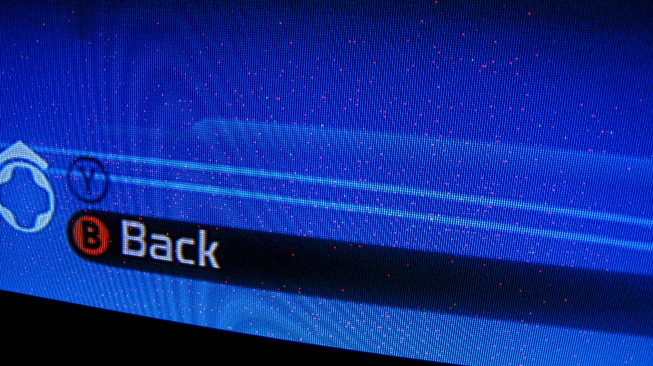
The same screen after adjustment.
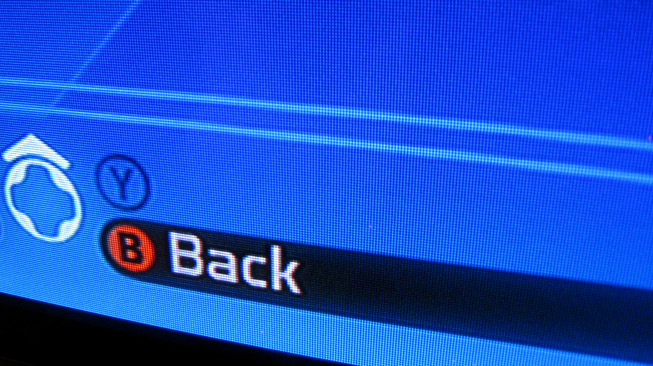
Kick the television to help loosen it up a bit and show it who's boss.
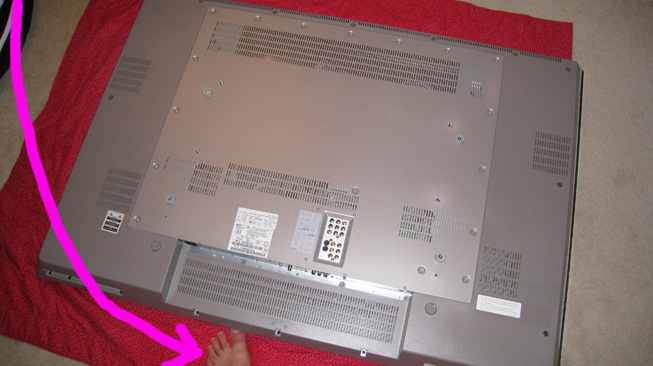
Remove the back panel screws. I used a T9/T10 Torx bit screwdriver; yours may be different.
There's likely going to be quite a lot of them.
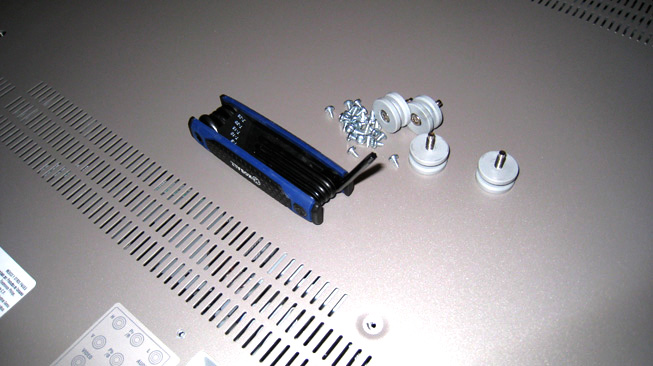
Remove the panel. Do not touch or drop anything in here.
Touch a grounded metal source to discharge any static you may have built up on yourself.
This is to protect the TELEVISION; a small shock like a static pop from your hand can fry electronic components.
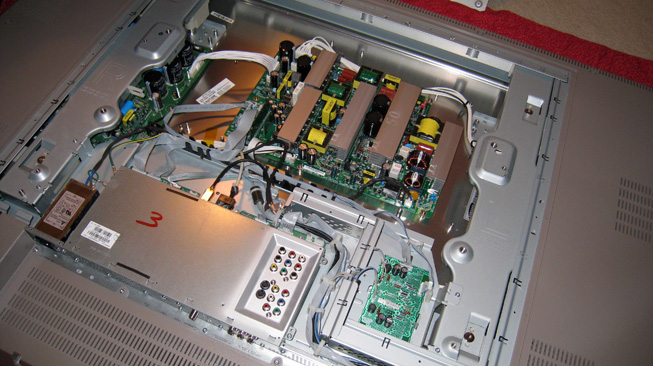
Look for the print on the circuit board to determine which controller you're viewing.
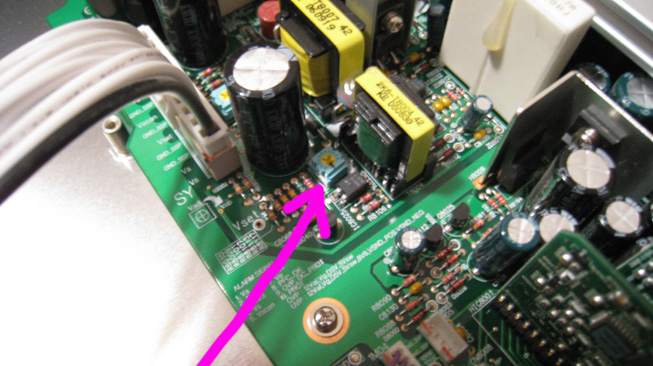
Here's the VSCt controller. The VSCAN controller is in the upper left hidden by a capacitor, but you can see the print on the circuit board.
I used a black marker to note the original position in case I wanted to set it back. Start adjustments with small counter-clockwise turns.
Again, do not make contact with ANYTHING other than the controller, and use a plastic or rubber screwdriver/fork/knife/etc if possible when adjusting.
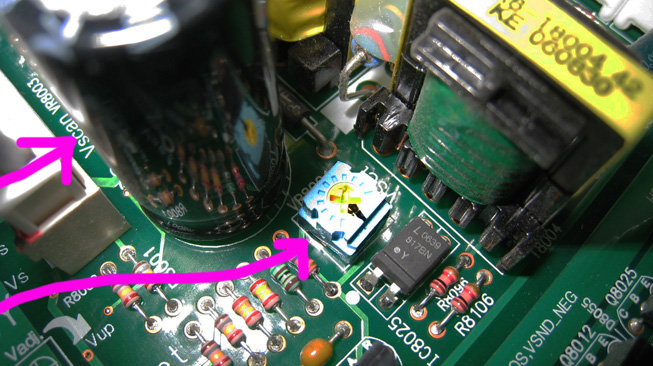
Make sure the TV is stable, accessible and viewable. Ground yourself again by touching any nearby metal that would produce a shock to you.
Plug it in and power it on. Get a friend, or mirror, and watch as you test your adjustments using a screen that produces the artifacts.
I turned my VSCAN potentiometer about 140 degrees counterclockwise, and the picture has been perfect for over 4 years now.
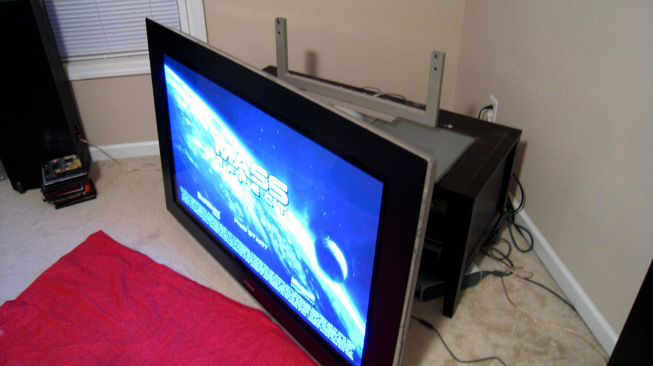
Questions or comments, feel free to contact me: jopezu@gmail.com